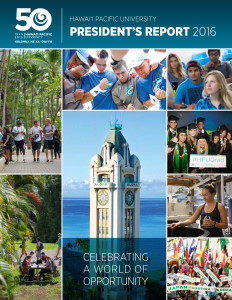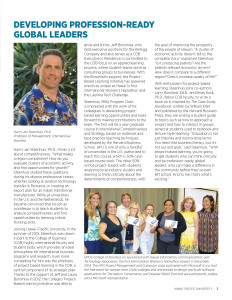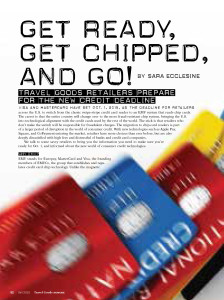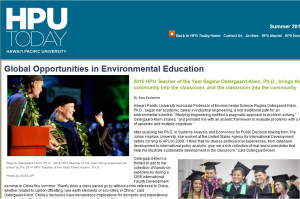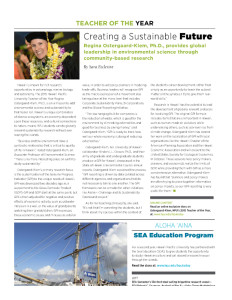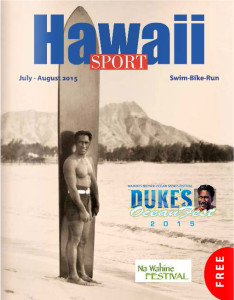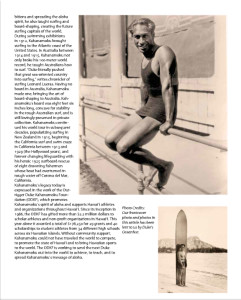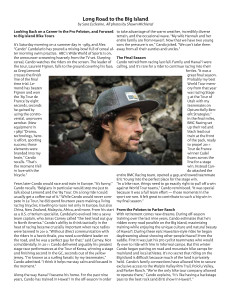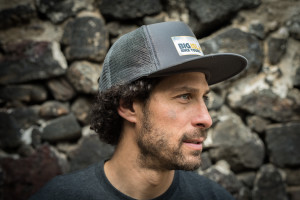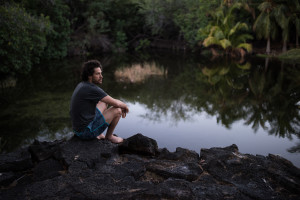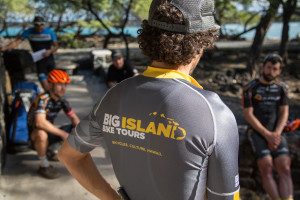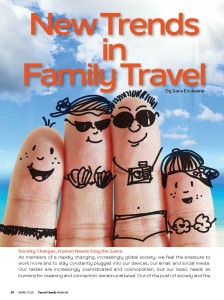
Society Changes, Human Needs Stay the Same
As members of a rapidly changing, increasingly global society, we feel the pressure to work more and to stay constantly plugged into our devices, our email, and social media. Our tastes are increasingly sophisticated and cosmopolitan, but our basic needs as humans for meaning and connection remain unaltered. Out of the push of society and the pull of intimacy, new trends are emerging that allow individuals and families to create personal moments, bond with their loved ones and create lasting memories, even in the midst of an intense business trip, and despite the pressure of a competitive, jaded, Instagram-fueled leisure culture. One such trend is the rise of “bleisure” travel, travel that melds business and leisure. The other is multigenerational aspirational adventure travel, the family vacation guaranteed to get the attention of even the most jaded tween, and create memories that will last a lifetime.
Connected Workers, Disconnected Families
According to research by Project Time Off, workers in the United States are using a historically low number of vacation days, fewer than at any time in the last 40 years. (Project Time Off is a non-profit organization with the mission to increase the use of vacation time, supported by a broad coalition across the travel and retail spectrum including the National Retail Federation.) On average, if you live in the United States you’ll take only 16 vacation days in 2015, almost a week less vacation compared to an average of 20 days in 2000. Project Time Off is concerned with documenting and defining the effects of this drop in vacation time, not just for individual workers, but for the health of their children and families. In The Work Martyr’s Children: How Kids Are Harmed by America’s Lost Week, Project Time Off asserts that today’s generation of children are missing out on vacation traditions and quality time with their parents. Dr. Lotte Bailyn, study contributor and professor emerita at the MIT Sloan School of Management, notes that the study found that most kids (61%) want to spend quality time with parents during vacation. While just 19% of kids say they are in a very good mood during their everyday life, this number jumps to 60% when parents take time off work to hang out with them. “Their moods are different and it takes a while to get them out of their shells,” Bailyn explained. “In a strange way, particularly with younger children, the best relationships come when there’s enough quantity time to drive quality interactions.” Although family time is important to children, nearly a quarter of working parents reported that it had been more than a year since their last family vacation. The work pressures that keep parents at the office are the same ones that keep other American workers from using their vacation time, fears that they will “come back to a mountain of work” (29%) because “no one else can do the job” (20%) topping the list.
The Rise of Bleisure Travel
At the same time that families and individuals are suffering the effects of taking fewer vacation days, business travel has been on the increase and is expected to continue to rise through the end of 2015 and 2016. The Global Business Travel Association (GBTA), an international business travel and meetings organization, projects that both individual and group business trips in the U.S. will increase by approximately 2% a year in 2015 and 2016, while international business trips are expected to increase by 5% in 2015 and 7% in 2016. According to Michael W. McCormick, GBTA executive director, “thanks to a healthier domestic economy and a stronger U.S. dollar, companies are putting more travelers on the road not only because they can afford to, but because they continue to see a strong return on their business travel investment.”
Squeezed by more pressure at the office and more time on the road, how are workers fighting back? With bleisure travel, defined as a trip that includes both a business and leisure component. According to two recent studies, business travelers are increasingly staying over the weekend, bringing their family, and leaving the hotel room to work in parks and coffee shops. This year BridgeStreet Global Hospitality released THE BLEISURE REPORT 2014, based on a survey of 640 international guests. And Hotwire.com® also published their third American Travel Behavior Survey, both of which documented a strong bleisure travel trend.
The Numbers behind the Trend
According to BridgeStreet Global, bleisure travel is on the rise. The majority, 60% of travelers, report that they are more likely to take bleisure trips today than they were five years ago. The same number (60%) have already taken bleisure trips, adding an average of two vacation days per business trip. Among bleisure travelers, more than half (54%) bring along their family or significant other. Younger travelers (age 25-34) are the strongest adopters, with 93% expecting to take a bleisure trip in the next five years.
Hotwire.com® reported similar results. Roughly half of American business travelers have added leisure time to a business trip, with 56% of younger travelers 18 to 34 and 37% of 35 to 44-year-olds reporting bleisure trips. Henrik Kjellberg, president of Hotwire®, is an advocate of bleisure travel. “You might have to travel for business, but it doesn’t mean you have to let much-deserved leisure trips fall by the wayside. Popular domestic business hubs like Atlanta see a ton of foot traffic during convention season. However, once the corporate groups leave – typically on Thursdays – hoteliers drop their prices for the weekend to try and fill rooms with leisure travelers. As such, you can spend a couple of extra days away to explore or relax in one of these great cities while taking advantage of affordable hotel deals.” Industry veteran Bobby Williams, founder of BOCONI bags and leather, can relate. “I definitely live in bleisure travel-mode with my family…non-stop all the time!”
Equipping the Bleisure Traveler
Retailers can respond to the bleisure trend by tailoring their sales and marketing message to this new reality, rather than drawing a strict line between work and leisure travel, and by stocking products that encourage flexibility and exploration, such as structured backpacks or convertible briefcase/backpack combos. According to BridgeStreet Global, even if they don’t extend their trip 82% of business travelers take time out to explore the city they’re visiting. The right bag can encourage micro-adventures: jumping on a shuttle to see a city during a layover, or taking a hike through a sculpture garden. When talking about bags for business travel, bringing up the idea of bleisure travel to your customer can change the tone of the conversation from the contemplation of impending drudgery to the possibility of wonder and fun.
One game changer, according to both travel icon Rick Steves and the travel blog One Bag, is to steer able-bodied travelers away from rolling bags, which can easily lose a third of interior volume and add a third in weight due to the addition of wheels, retractable handles, and attendant hardware. Doug Dyment from One Bag asserts, “few places worth visiting are conducive to rolling a bag behind you; even modern city sidewalks have curbs, cracks, congestion, and clutter (often of the unpleasant organic variety).” And Rick Steves points out, “I really appreciate the mobility and practicality of having both hands free while en route – I can eat a sandwich or buy a bus ticket and hop on board without breaking my stride.”
But bleisure travel isn’t just about squeezing a micro-adventure in between meetings, it’s about adding on a weekend to explore the city, or bringing the kids along on your work trip. Even seasoned road warriors will need to learn new packing tricks, as their small work carry-on bag will need to fit more and do more. This is where retailers can be game changers, by providing packing seminars and educating their clients about the use of cubes and other organizational features. Steves is a strong proponent of packing cubes, “packing cubes are a worthwhile supplement to any bag purchase. They help compress your clothes, keep them organized, and allow you to easily access your bag’s contents without risking spilling all of them out on the airport or train-station floor.”
The TLS Professional Weekender, developed by eBags in response to the input of business travelers, is chock full of features perfect for bleisure travel. In the office, the TLS Weekender can be carried briefcase-style, with or without a shoulder strap. Because no one wants their socks (or kids’ toys!) to go tumbling onto the meeting room floor when they’re digging for their laptop or charger, clothes are in a completely separate compartment than the laptop and organizer areas. The clothing compartment is shaped to be used with the eBags packing cubes for additional compression, organization, and carrying capacity. While sightseeing between meetings, the bag can be worn as a backpack with sternum straps and a padded, ventilated Airmesh back panel. In the airport, the laptop section is TSA-checkpoint friendly. Although everyone loves basic black, the new heathered graphite colorway is also a great choice. It will pop on your sales floor while still reading as a neutral.
New this winter, BOCONI is introducing the Tyler Tumbled Campus Pack, a polished, stylish backpack that’s ideal for bleisure travel. It looks good enough for the boardroom, in Milano grained leather finished with antiqued nickel hardware. But it’s also comfortable and capacious enough to extend your trip over the weekend and explore a new city.
For customers who appreciate a sporty aesthetic, the TPro® Bold™ 2.0 carry-on backpack from Travelpro is a great choice.
Because the demographic with the largest percentage of adopters is the under-34 set, a roomy, durable and on-trend bag like the HEX Sonic backpack should be part of your store’s bleisure merchandising plan. The Sonic features laptop and organizer pockets for office-access, and two completely separate gear/clothing pockets. It comes in a variety of neutral-but-not-boring fabrications. The most adventure-friendly bag in the HEX collection is the HEX Roark Revival Mule Backpack with a 30-liter carrying capacity and enough comfort features for a weekend in the mountains. The sophisticated PV-coated cotton fabrication keeps you from looking like a backpacking college student, and the separate laptop compartment allows for easy access to your computer without exposing the office to your hiking boots.
Multigenerational Aspirational Adventure
The last decade has seen the rise of “grandtravel,” where time-poor parents are left at home with their busy careers, and grandparents and kids vacation together. In the Instagram age, this trend is combining with adventure travel (bucket-list trips like summiting Everest or an African safari) into the aspirational adventure family vacation. Multi-generational families, not necessarily including parents, but often funded by and including grandma, are looking for more exotic experiences than the beach or the nearest national park. The Travel Channel calls these social-mediagenic family trips one of the top five travel trends this year. “Families are foregoing the family vacations of the past, where quality time was spent parked at the beach, and instead are looking for transformative experiences that the whole family can share.” But going to the Galápagos Islands in a family group with members that are between eight and 80 means shopping for a tour with a lot of support and comfort, dovetailing neatly with the trend of “glamping.” This is good news for retailers, since exotic, aspirational family vacations require support, advice, and specialized travel equipment from savvy retailers. Expect sales of products like soft-sided luggage that can be loaded onto a camel, smart children’s products, bug- and-sun resistant clothing in every size, and lots of opportunities for packing seminars.
The Numbers behind the Trend
How big is multi-generational travel? Rainer Jenss, president and founder of the Family Travel Association, asserts that their research shows that 33 to 40% of the $270 billion leisure travel business is multigenerational. According to a recent national survey conducted by Preferred Hotel Group and marketing company MMGY Global, there are four key aspects to the multi-generational adventure trend. Grandparents (35%) are paying for the trip, more so than the parents (25%), but 40% of both grandparents and parents say the grandchildren are active in vacation planning. Lindsey Ueberroth, president and CEO of Preferred, explains, “(millennials) are doing a lot of online research. What happens is the grandparents come in and want to pay, and millennials come in with the research…to create a unique experience.” Global travel is particularly popular, because multigenerational vacationers “want a deeper cultural experience,” Ueberroth explains. Family Vacation Critic, TripAdvisor’s family travel site, is also touting “experiential travel” as a key family travel trend, noting that Disney is jumping on the bandwagon, with offerings such as a cooking class in Ecuador through Adventure Disney.
Destination Transformation
Because time for family togetherness is scarce and precious, families are setting high standards for their trips. CNN recently published a story titled “10 Places that can Change your Child’s Life.” (No pressure, vacation planners!) Where is adventure travel taking these families-on-the-go? Alaskan cruises combine luxury, separate programs for all ages, and shared experiences in nature. Luxe lodges in South America entice families to visit bucket list destinations like Patagonia, while providing well-organized horseback riding, photo safari, fishing, kayaking, and hiking excursions. Huffington Post author (and CEO of Chill Expeditions) Crawford Hill touts “Ecuador and the Galapagos, Costa Rica and Andalusian Spain, which offer great opportunities for relaxation and countless possibilities for experiential learning as a family. This kind of educational travel adventure is far more enduring than simply traveling to an all-inclusive resort together – and obviously it offers a more authentic and engaging opportunity.” Jenss notes that children love animals, making Alaska, Central and South America and Africa great destinations, and that children as young as 10 years old can get certified to scuba dive.
Equipment and Preparation
For the multi-generational family adventure, equipment and preparation are key. Adventure travel means backpacks and soft-sided duffles in durable fabrics and understated colorways, making Travelpro’s National Geographic™ duffles perfect for the adults, while animal-themed child-sized carry-ons like the ones in the National Geographic™ Collection by Travelpro help get kids excited for the trip. Tuck a tube of critters from Safari Ltd. into the kids’ carry-on to play with on the plane, and help them get in the spirit of adventure. TrendyKid also makes animal character carry-ons, as well as bags with more sophisticated graphics for tweens.
Lightweight packing is even more important for adventure travel than bleisure trips. Peter Cobb, co-founder of eBags.com, takes note: “inspired by YouTube and travel blogs, there is an explosion in the number of people deciding to take trips off the beaten path. They want to experience nature, history, culture, and food in exotic locations once thought to be out of reach. They are finding that lightweight travel backpacks with packing cube organizers can make all the difference in managing their belongings throughout the trip.” The eBags TLS Mother Lode Weekender and Weekender Junior (for smaller-framed travelers) fits the bill with ease, offering many of the same organizational features found in the eBags TLS Professional Weekender, but in additional size and color choices. The BOCONI Bryant LTE Ruck Sack, in Heather brown canvas with antiqued mahogany pull-up leather, and finished with a durable waterproof coating, makes an elegant set for adventure travel when combined with the Bryant Safari Bag in antiqued mahogany pull-up leather, also with a waterproof finish.
But it’s not just about bags. Look for travel goods manufacturers who carry products that can help keep traveling families safe, healthy and comfortable. Your customers will appreciate Goodwipes, the extra-large-size cooling towelettes, great for camping, safaris, and hiking in warm climates. Emergency ponchos and mini LED flashlights are a no-brainer. And check out Go Travel’s Mosquito Cot Net, a lightweight mosquito net ideal for cots, cribs, and strollers, which protects against bites and stings. Go Travel also makes a kid’s door stop, which prevents doors from locking accidentally and protects little fingers from heavy hotel doors. And don’t forget Airtushi, Oakthrift’s inflatable travel highchair.
Defining the Problem, Finding the Solution
In this connected world, human ingenuity is allowing us to find ways to relax, to unplug, and to bond with nature and with each other. The new travel trends of bleisure travel and the multigenerational aspirational family vacation are born out of the challenges of modern life, and require more planning and travel knowledge than the road trips and weekends at grandma’s house enjoyed by previous generations. But with advice and equipment from a great travel retailer, families can enjoy the same potential for bonding and fun during their leisure travel time, even if their circumstances and surroundings look very different from 40 years ago.
This story originally appeared in the Winter 2015 issue of Travel Goods Showcase
